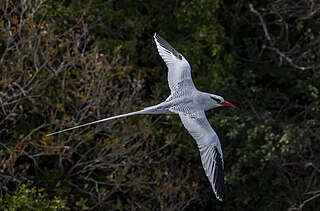 W
WThe Saint Helena crake is an extinct bird species from the island of Saint Helena in the South Atlantic Ocean, one of two flightless rails which survived there until the early 16th century.
 W
WThe Saint Helena cuckoo is an extinct bird. It was confirmed to have previously existed by a single humerus. Compared to other cuckoos, it was relatively small, and it probably lived in forests on the island of Saint Helena. Its extinction was a result of deforestation on the island in the 18th century.
 W
WThe Saint Helena dove was a species of flightless bird in the family Columbidae. It is monotypic within the genus Dysmoropelia. It was endemic to the island of Saint Helena in the South Atlantic Ocean. It is known from remains of Late Pleistocene age found at the Sugarloaf Hill locality, which consists of aeolian calcareous sands. The holotype consists of a right coracoid, with paratypes consisting of "distal end of right tarsometatarsus, (S/1963.25.29) distal half of right humerus, (S/1963.25.26) worn left tibiotarsus lacking distal end, distal portion of shaft of left tarsometatarsus, (S/1963.25.30) worn proximal end of right humerus. left ulna, proximal fragments of left ulnae, (175959) proximal end of right femur, (175962) distal end of right humerus"
 W
WThe Saint Helena hoopoe, also known as the Saint Helena giant hoopoe or giant hoopoe, is an extinct species of the hoopoe, known exclusively from an incomplete subfossil skeleton. It was last seen around 1550.
 W
WThe black noddy or white-capped noddy is a seabird from the family Laridae. It is a medium-sized species of tern with black plumage and a white cap. It closely resembles the lesser noddy with which it was at one time considered conspecific. The black noddy has slightly darker plumage and dark rather than pale lores.
 W
WOlson's petrel, also known as the small Saint Helena petrel or Saint Helena Bulwer's petrel was a species of seabird in the family Procellariidae. It was endemic to Saint Helena.
 W
WThe soft-plumaged petrel is a species of seabird in the family Procellariidae.
 W
WThe Saint Helena plover, locally known as the wirebird due to its thin legs, is a small wader endemic to the island of Saint Helena in the mid-Atlantic. The bird is similar in appearance to the Kittlitz's plover of sub-Saharan Africa, but is rather larger. It is the national bird of St Helena and has been depicted on the country's coins. Populations in general have been declining. Threats include predation by cats, the introduction of the common myna, deforestation, off-road vehicle use, the Saint Helena Airport and a projected windfarm. In 2016, the population had recovered to about 560 mature individuals, from a previous minimum of less than 200 in 2006; consequently, the species was downlisted to Vulnerable from its previous assessment of Critically Endangered.
 W
WThe Saint Helena rail was a large flightless rail from Saint Helena. It became extinct in the early 16th century.
 W
WThe red-billed tropicbird is a tropicbird, one of three closely related species of seabird of tropical oceans. Superficially resembling a tern in appearance, it has mostly white plumage with some black markings on the wings and back, a black mask and, as its common name suggests, a red bill. Most adults have tail streamers that are about two times their body length, with those in males being generally longer than those in females. The red-billed tropicbird itself has three subspecies recognized, including the nominate. The subspecies mesonauta is distinguished from the nominate by the rosy tinge of its fresh plumage, and the subspecies indicus can be differentiated by its smaller size, more restricted mask, and more orange bill. This species ranges across the tropical Atlantic, eastern Pacific, and Indian Oceans. The nominate is found in the southern Atlantic Ocean, the subspecies indicus in the waters off of the Middle East and in the Indian Ocean, and the subspecies mesonauta in the eastern portions of both the Atlantic and the Pacific Oceans and in the Caribbean. It was one of the many species described by Carl Linnaeus in his 1758 10th edition of Systema Naturae.
 W
WThe white-tailed tropicbird (Phaethon lepturus) is a species of tropicbird. It is the smallest of three closely related seabirds of the tropical oceans and smallest member of the order Phaethontiformes. It is found in the tropical Atlantic, western Pacific and Indian Oceans. It also breeds on some Caribbean islands, and a few pairs have started nesting recently on Little Tobago, joining the red-billed tropicbird colony. In addition to the tropical Atlantic, it nests as far north as Bermuda, where it is locally called a "longtail".